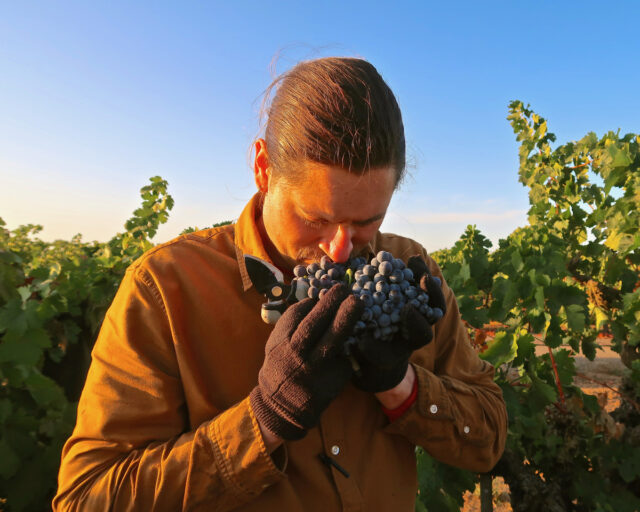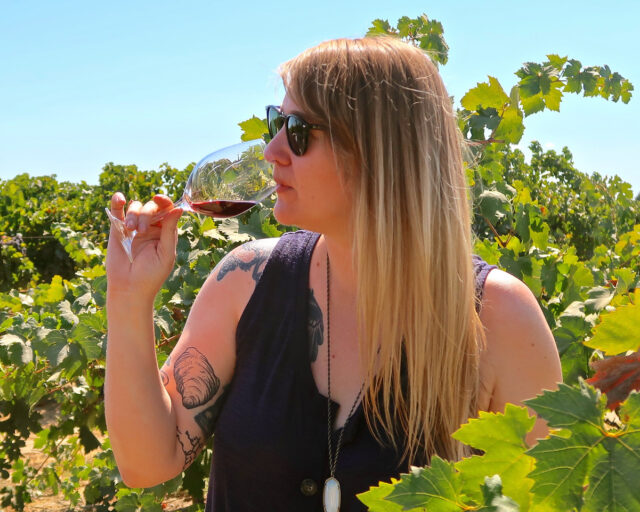Today’s cutting-edge wines are more terroir-expressive than the usual commercial styles. What I don’t get, though, is how formulaic it’s all become.
By Randy Caparoso
I love alternative style wines. They’ve kept my interest in wine piqued for the more than-45 years I’ve been in wine-related industries. Otherwise, I’d have been bored to tears.
Still, I have to admit: Many of the alternative wines of today are no more original or innovative than conventional wines. Over and over, you hear the same words and phrases:
“Natural”; “Native yeast”; “Skin contact”; “Whole cluster”; “Whole berry”; “Neutral wood”; “Amphora”; “Foot tread“; “Unfiltered”; “Holistic”; “Organic”; “Pét Nat”; “Glou-glou.”
It reminds me of my years in the restaurant industry, when you’d hear the same things again and again:
“Blackened”; “Pesto”; “Sun dried tomato”; “Mousse”; “Crème brûlée”; “Molten chocolate” ; “Wood oven pizza”; “Red wine reduction”; “Tartare”; “Arugula”; “Deconstructed”; “Fusion”; “Foam”; “Molecular”; “Farm-to-table”; “Sustainable.”
…and on and on.
During my restaurant career (I’ve opened restaurants from Hawai`i to New York), no matter where you went, you’d always find the same dishes, using the same ingredients, done in the same cooking styles. Sure, it was fun experiencing the endless possible variations. But while the slavish adherence to food trends can be entertaining, it can also be predictable — to the point of being insufferable.
The “new” style wines are exactly the same.
The Same Kind of Special
When speaking with many of today’s winemakers, you really don’t have to ask how they make their wines. They make them all the same way. Yet each and every one of them is convinced they’re doing something different. They’re busily reinventing the wheel: the exact same wheel everyone else is using.

Don’t get me wrong. It’s all good. Today’s cutting-edge wines are more terroir-expressive than the usual commercial styles. Finally, you can taste many wines the way they’re meant to taste, which is like the grapes and vineyards from where they are sourced — not a wine brand’s style or a winemaker’s ego. This is progress.
What I don’t get, though, is how formulaic it’s all become. The latest generation of winemakers, for instance, are fermenting on skins or as whole clusters, whether or not the grapes from particular vineyards or regions are warranting that treatment. I don’t understand when they’re working with a vineyard for the very first time, and they still follow the exact same protocols.
When I ask “Why?,” they say pretty much the same thing: “This is how I express myself.”
Of course it’s not about expressing a vineyard or place. It can’t be about that if you follow the exact same script for wine after wine, no matter what the grapes are or where they come from. This is not true, noncommercial “art.” It’s more like paint-by-numbers.

Winemakers, of course, are sensitive people. I understand that. They wear their proverbial soul patches the way the French wore berets. This is no different, of course, from man-buns or full-arm tattoos and nose rings, with each perpetrator totally convinced that no one else in the world is like them.
The French Method
The worst of it is that these styles of wines have become clichés. This leaves them open to criticism, the same way Democrats are lampooned for being wishy-washy and Republicans for being pinheads. Is there a solution?
One option might be for a more official, or at least better defined, affirmation. In France, for instance, there’s now a category for wines eligible to be classified as Vin Méthode Nature. Among the specific requirements for this labeling:
- Wines must be produced by hand-picked grapes from certified organic vines and vinified with indigenous yeast;
- In the winery, cross-flow filtration, flash pasteurization, thermovinification and reverse osmosis are prohibited;
- Up to 30 mg/l of sulfites are allowed, although there is a separate designation for wines produced with no added sulfites; and
- Wines are subjected to yearly third-party verification.
Is this possible in the United States? Don’t hold your breath.
Methinks the conventional industry may wish to keep the numbers in this tattooed or bun-wearing faction on the small side.
While I hate sameness, I also hate to see the products of wines and vintners pilloried for their earnestness. They might need to belong to their own little club. At least they’ll have legitimate reasons to keep copying each other.
__________________________________________________________

Randy Caparoso
Randy Caparoso is a full-time wine journalist/photographer living in Lodi, California. In a prior incarnation, he was a multi-award winning restaurateur, starting as a sommelier in Honolulu (1978 through 1988), and then as Founding Partner/VP/Corporate Wine Director of the James Beard Award winning Roy’s family of restaurants (1988-2001), opening 28 locations from Hawaii to New York. While with Roy’s, he was named Santé’s first Wine & Spirits Professional of the Year (1998) and Restaurant Wine’s Wine Marketer of the Year (1992 and 1998). Between 2001 and 2006, he operated his own Caparoso Wines label as a wine producer. For over 20 years, he also bylined a biweekly wine column for his hometown newspaper, The Honolulu Advertiser (1981-2002). He currently puts bread (and wine) on the table as Editor-at-Large and the Bottom Line columnist for The SOMM Journal (founded in 2007 as Sommelier Journal), and freelance blogger and social media director for Lodi Winegrape Commission (lodiwine.com). You may contact him at randycaparoso@earthlink.net


















